Really, it should be called Sheep Island or even Shearness. But it’s Kangaroo Island, off the coast of South Australia, where the eponymous ‘roos rule the roost. But locals know which side their bread is buttered: Click go the shears, it’s the industrious woolly sheep that keep the economy running.
Following Macfilos story on Kangaroo Island, I’m now homing in on the sheep industry and the accompanying photographs are designed to give you a flavour of what it’s like to be at the woolly end of the shears.
It is decided, we shall for monochrome go
The pictures were taken, in colour, with my newly acquired Leica Q3 43. I played around with them and tried various levels of saturation. Finally, like old Ernst Leitz, I came to a firm conclusion: It is decided, we shall for Monochrom go. Was it a sensible choice? I leave you to judge.
Photography magazines used to advise that you should not take a new camera away on a holiday without fully familiarising yourself with its operation. However, I had no concerns with the Q3 43 following my years of experience using a Q and then a Q2. What could possibly go wrong?
Quite a bit, really.
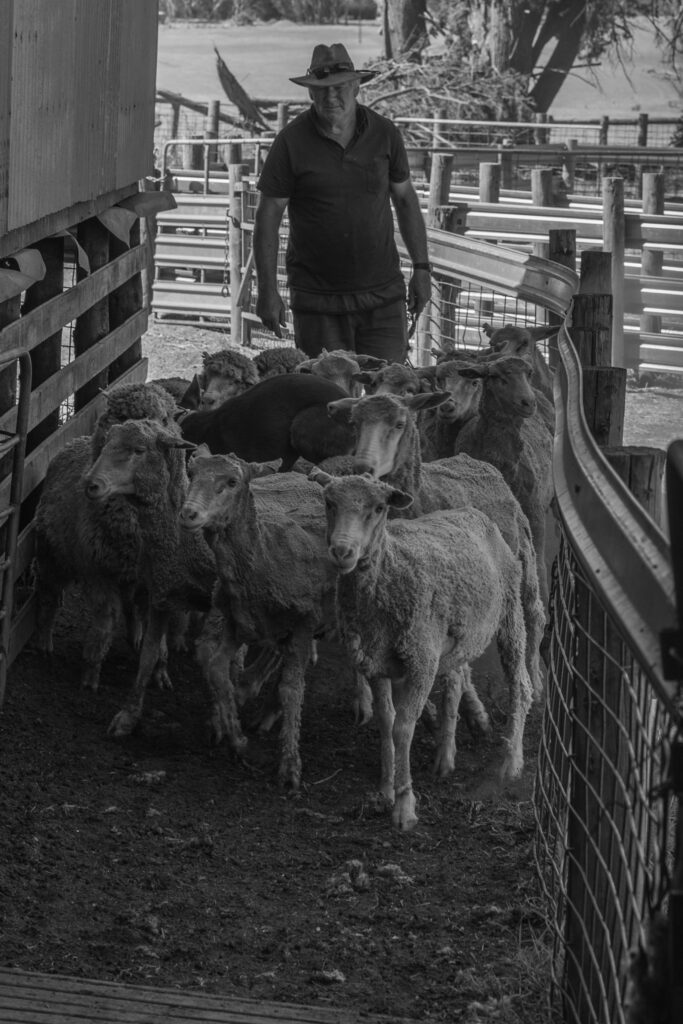
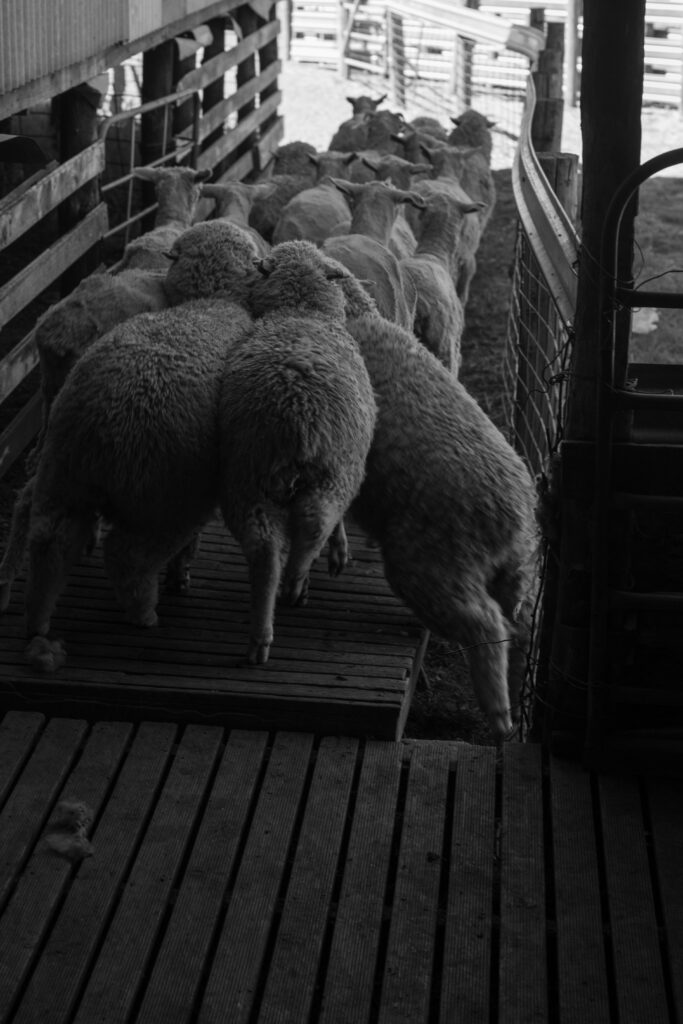
Not only the sheep get cropped
The first issue, as I mentioned in my earlier story, I did have an issue adjusting to the different angle of view of the Q3 43. I am now hard-wired into thinking in terms of the 28mm Q2, and it takes some unwiring.
Undoubtedly, I will adjust to 43mm over time, although the fact that I intend to continue employing the Q2 may well make the learning curve more difficult.
Having said that, the combination of the 43mm lens and the 60MP sensor did allow me to aggressively crop for the seal and koala shots in the previous story.
That pesky floating focus
The second issue I encountered was a familiar one — that pesky floating focus point. This serial pest has been a problem for many of us for years, but fortunately was solved a couple of years ago through a settings fix thanks to Thorsten Overgaard and Macfilos editor, Mike Evans.
I had grounded the floating point on my Q2 with this fix, but forgot about it for the Q3 until I was trekking across Kangaroo Island.
As soon as I lifted the Q3 and put it against my face, my nose touched the LCD screen and the focus point went walkabout. And I had forgotten how to configure the settings to nail the issue. It all came back to me at Adelaide airport on the way home. Difficulty resolved. Leica, I take back those dark curses I uttered from Kangaroo Island.
Click go the shears: Merino pullovers
Back to the photos and the sheep shearing. Farming the woolly ruminants is the major industry on the island. The animals are predominantly Merinos, bred for their prized wool. A staggering eighty percent of the Australian wool clip is exported to China.
Here you see a farmer with one of his working dogs, an Australian Kelpie, mustering sheep and shearing. “Click go the shears” is the title of a traditional Australian bush ballad which describes a shearer’s work using hand scissors in the days before cutters were electrically operated.
The shearer wears shearing moccasins, which protect the animals’ legs when the shearer stands on them to keep them down during the shearing.
Physiosheepery
Back problems were, and are, the bane of a shearer’s life. But the development of the back aid seen in the photos markedly reduces, but does not eliminate, the strain on backs.
The shearer removes the fleece in one piece. Indeed, an expert or “gun” shearer can crop a sheep in under three minutes as click click go the shears.
Shorn sheep look naked, but it is said they are relieved to lose their thick coats as they can hear better, feel lighter and are almost always more comfortable, especially in the Australian climate.
After the fleeces are shorn, they are individually assessed for wool quality and then mechanically compressed into a bale. Details of the contents are stencilled onto the bale, and it is then ready to be shipped, more than likely to China. It’s a fair swap for an iPhone…
There you are, then: My first Q3 43 photos shorn of all colour.
Make a donation to help with our running costs
Did you know that Macfilos is run by five photography enthusiasts based in the UK, USA and Europe? We cover all the substantial costs of running the site, and we do not carry advertising because it spoils readers’ enjoyment. Every amount, however small, will be appreciated, and we will write to acknowledge your generosity.

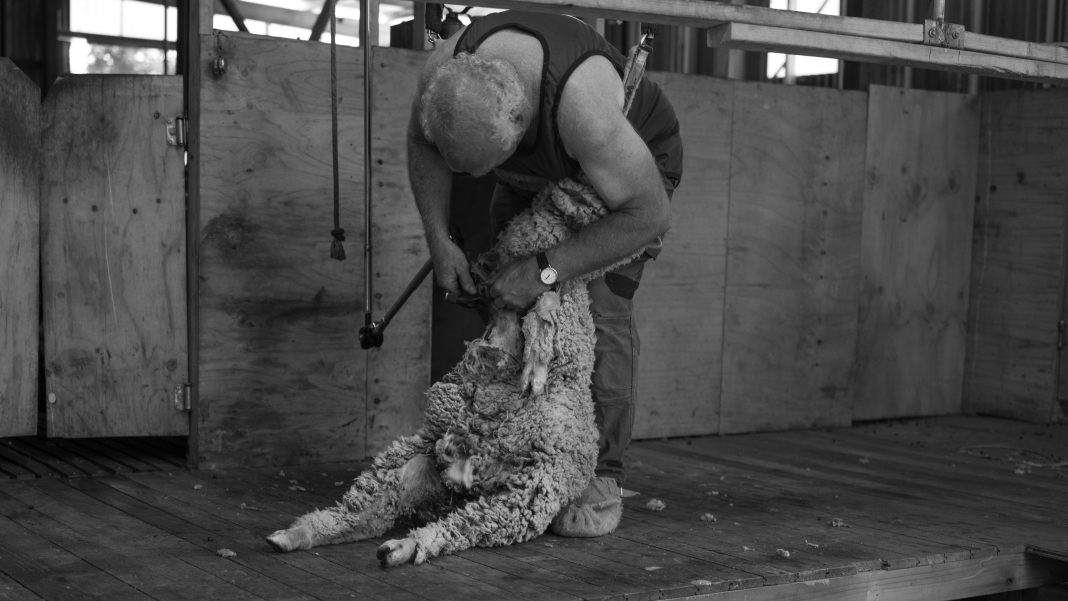
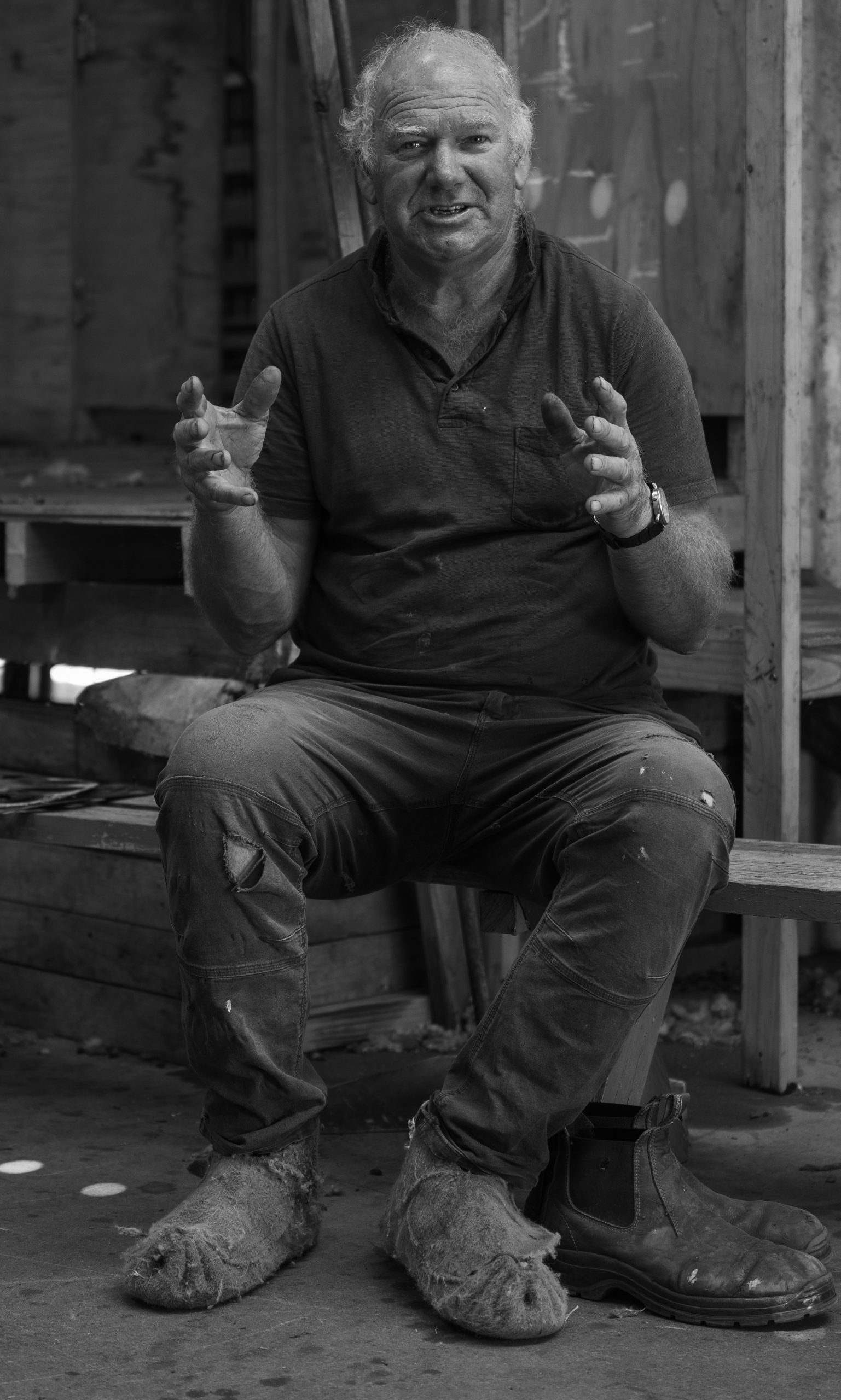
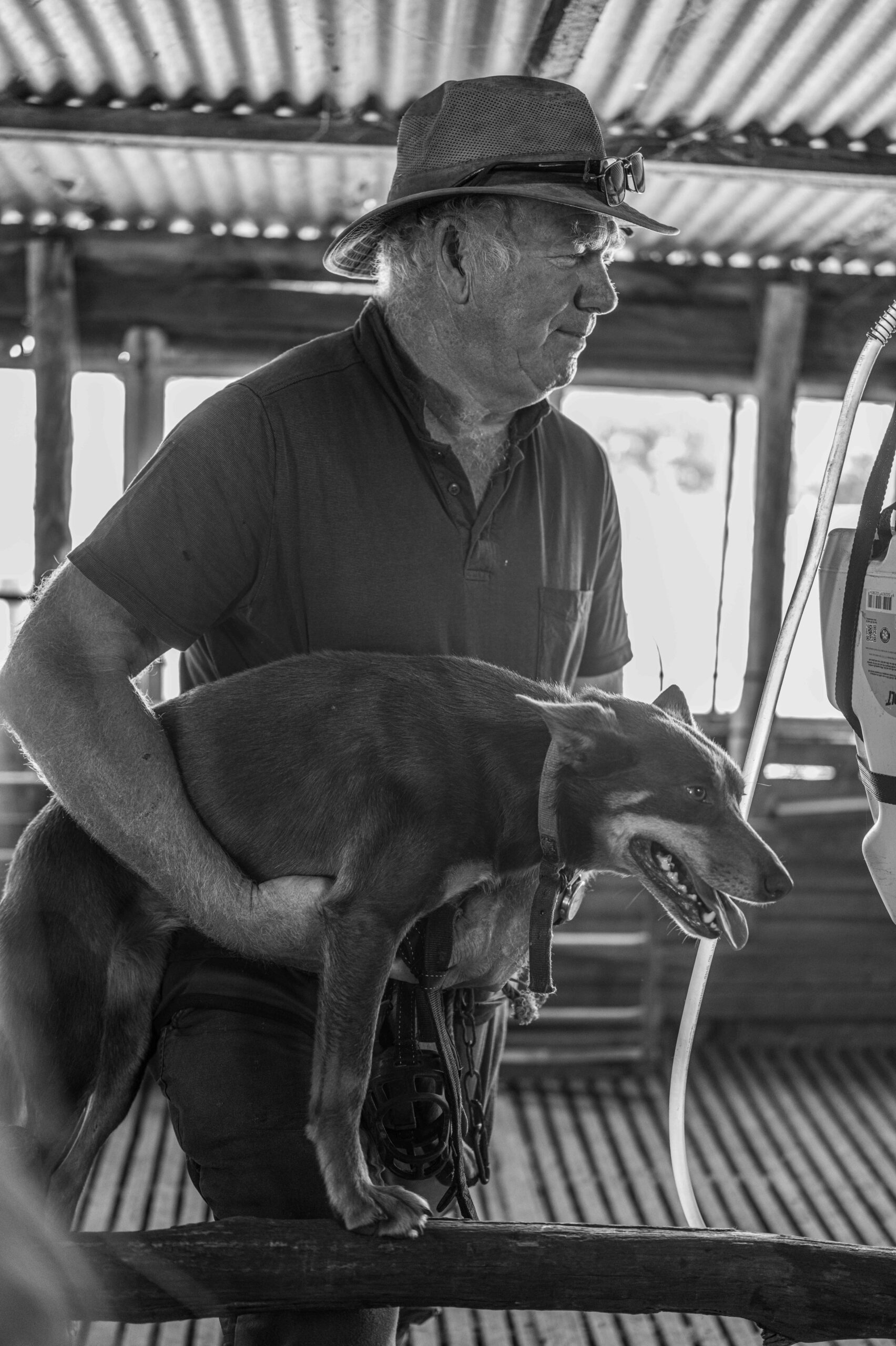
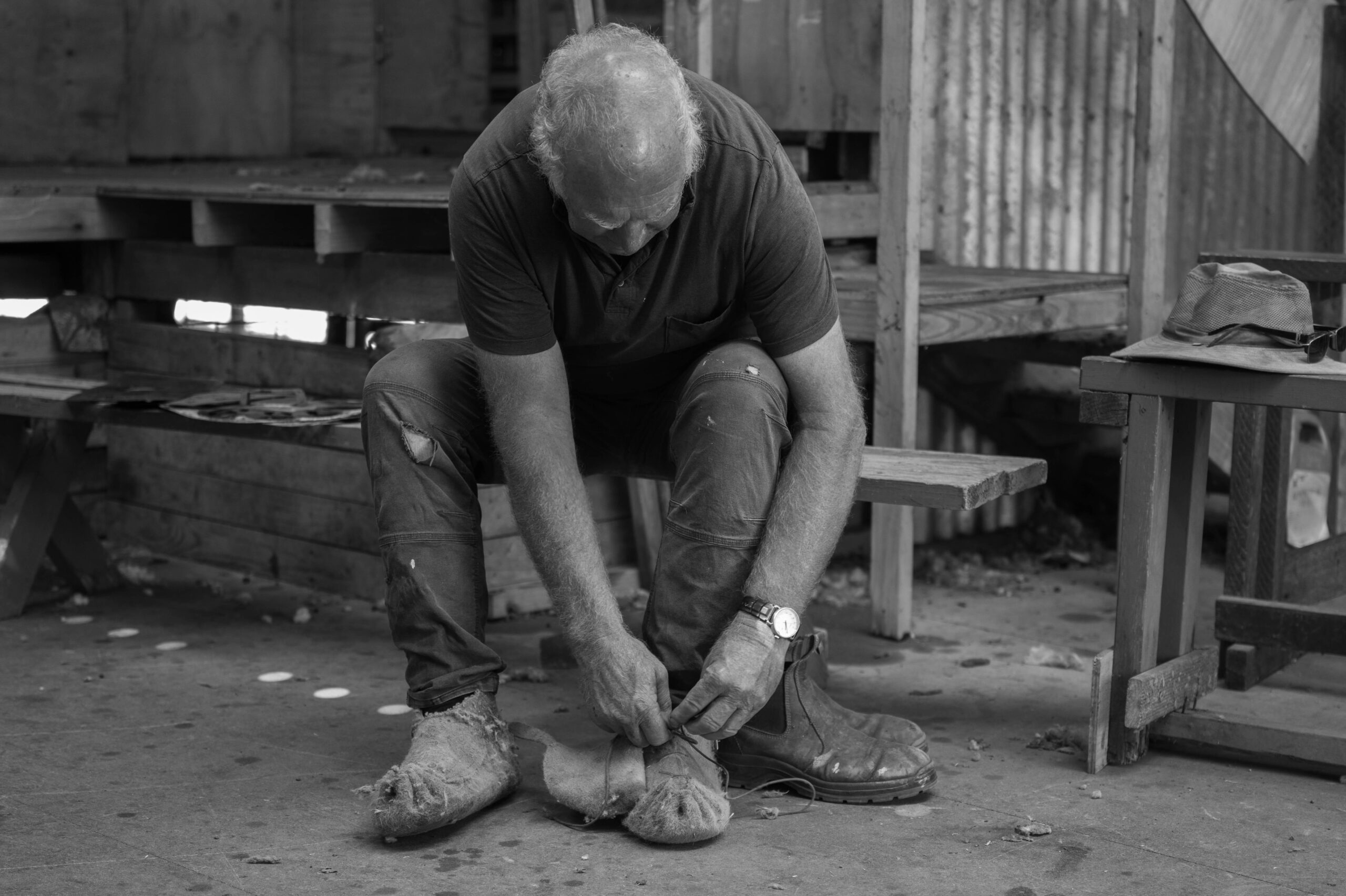
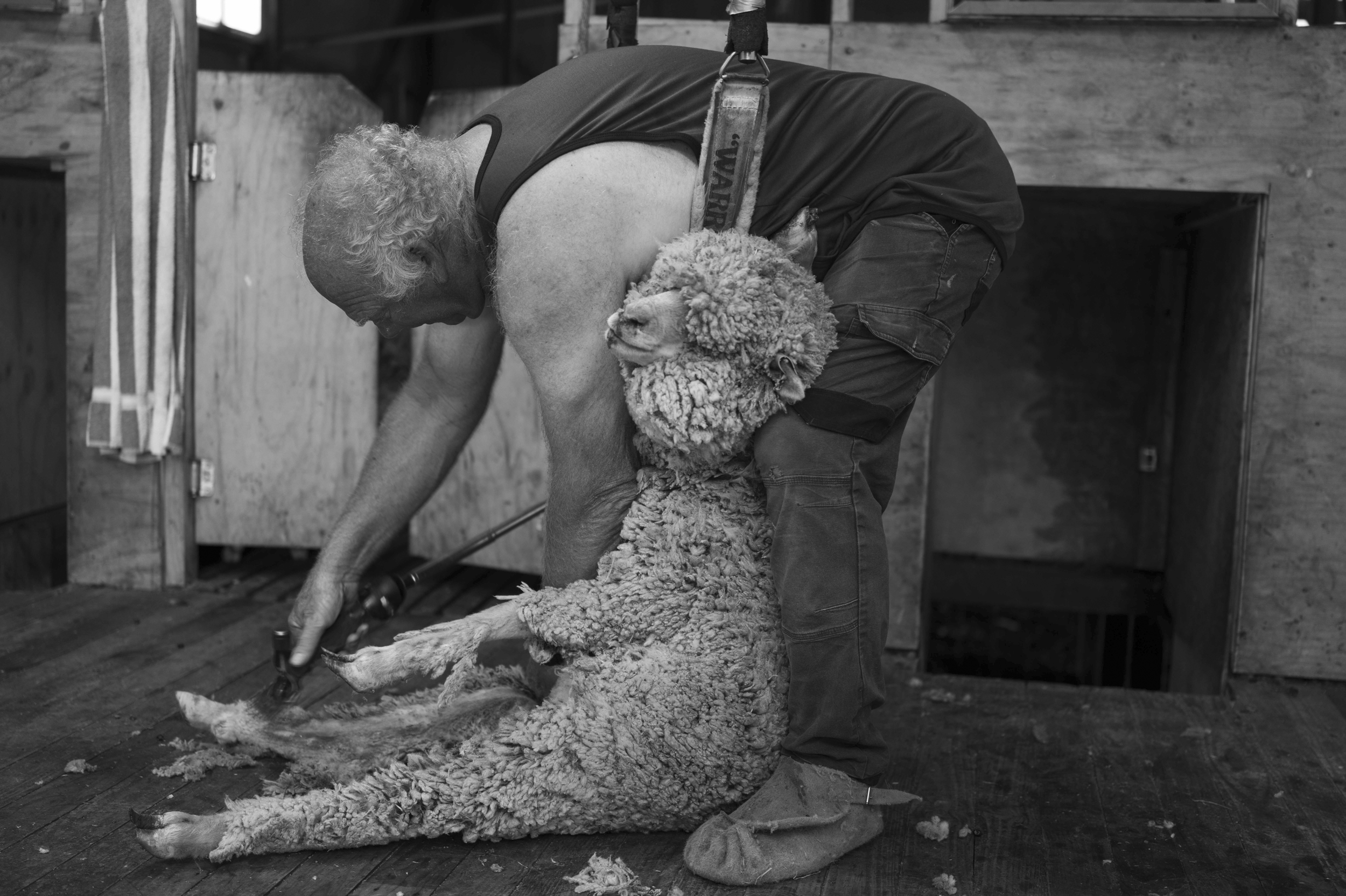
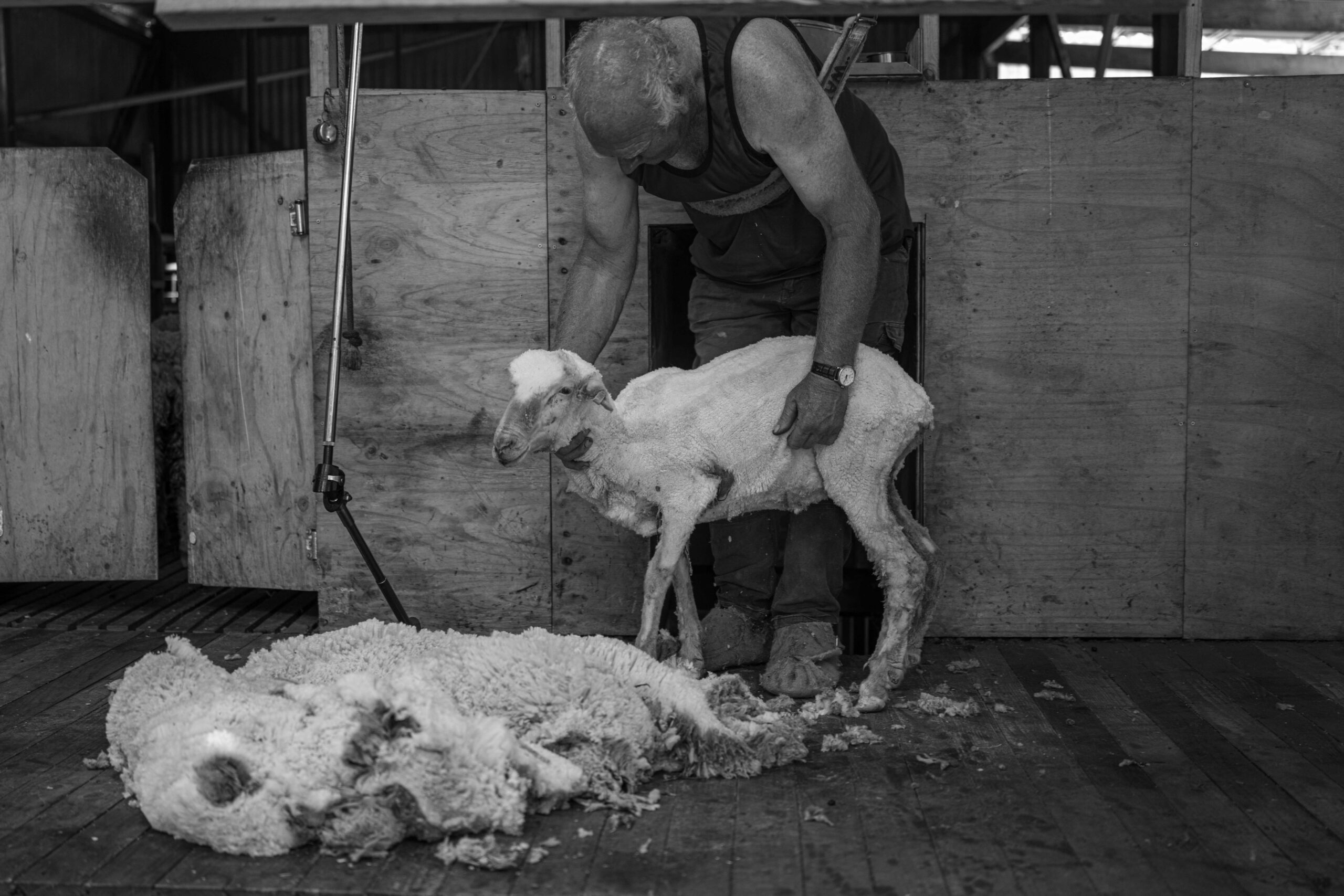
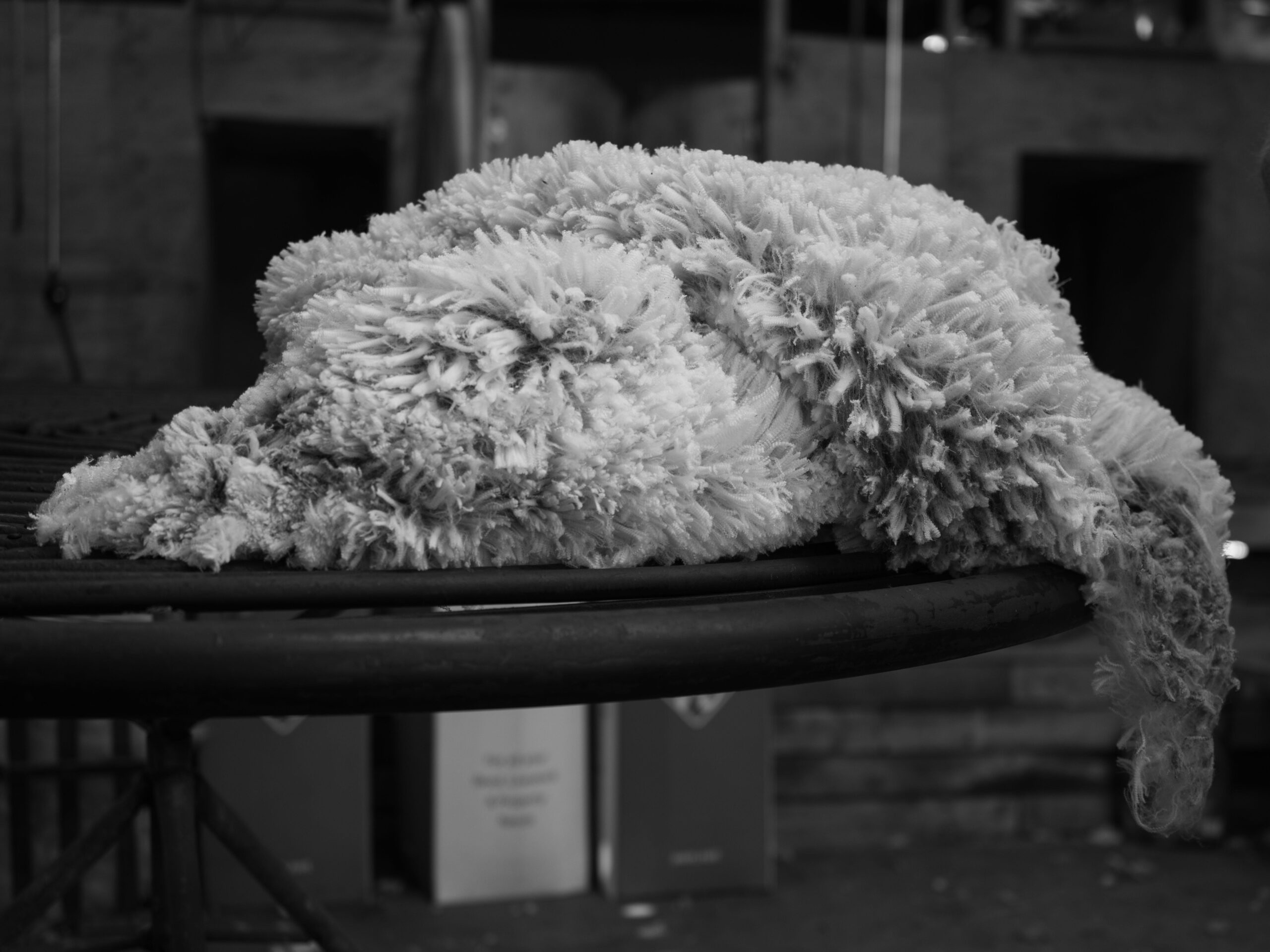
I spent three months in Australia, driving from Sydney to Adelaide, and though I saw quite a few sheep, none were shorn. This piece was educational.
I liked the photo just under the heading ‘Physiosheepery’. I’d imagined that shearing would be all mechanized, zip-zip-zip. But the photo shows some hard physical labor. The photo contrasts this with the shearee: the animal seems quite calm. A very nice composition, contrasting the two.
I was interested to read this article once I saw the thumbnail. I found it was missing a few things from a photographic perspective. I hope John won’t mind some constructive feedback.
In particular, “establishing” or “context” images to give us a better idea of the setting. Also there’s a lot of duplication – I count four shots of the top of a bloke’s head which is 50%. Closeups of the moccasins and the shears that highlight the amazing lens would be good for example.
The intention is good, and there’s some interesting info about the Q3 43 in the text. Looking forwards to John’s next submission.